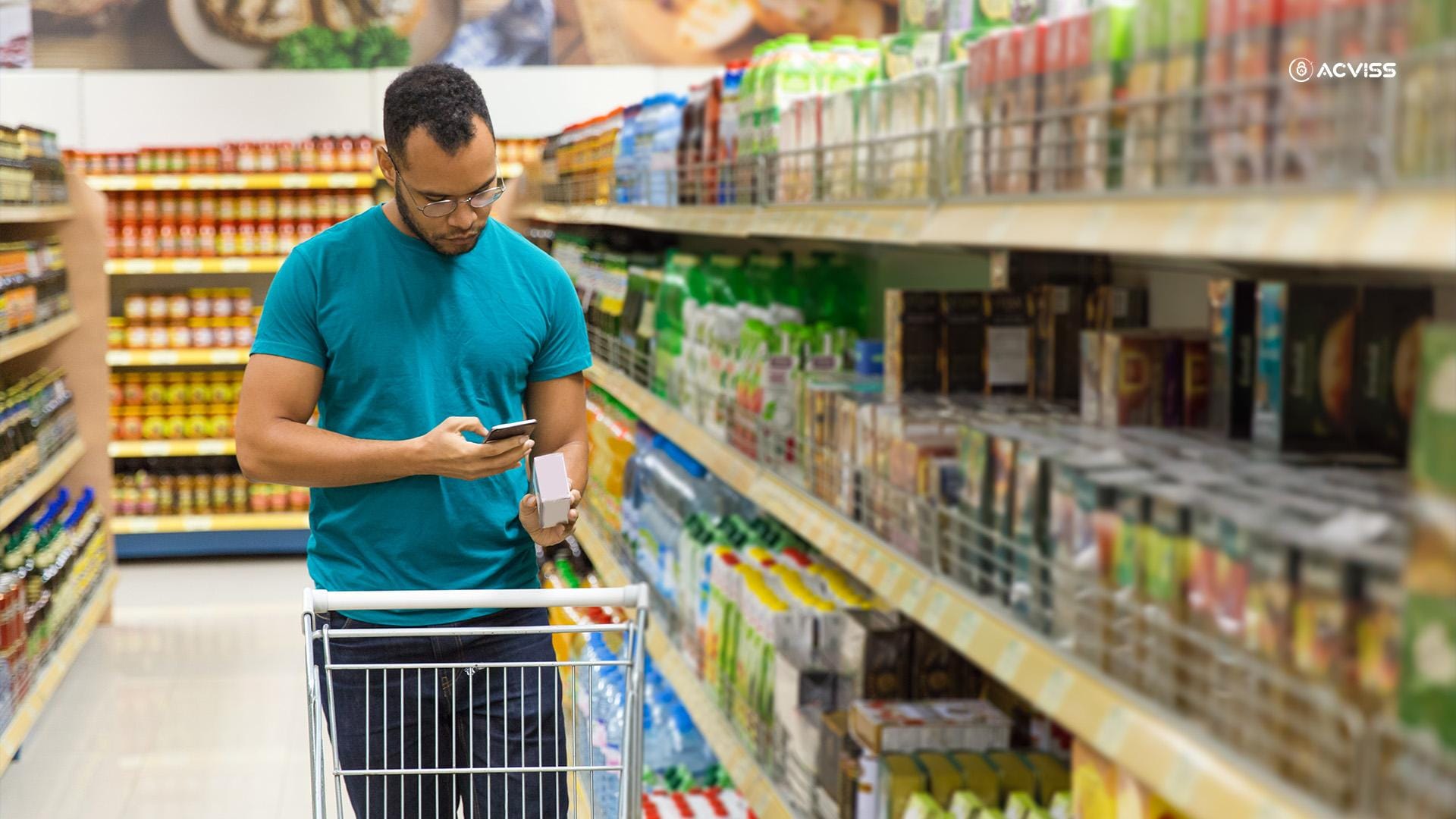How Brands Can Build Consumer Trust with Transparent Supply Chains

Trust has always been the foundation of consumer–brand relationships. In today’s global marketplace, however, that trust is constantly tested. From counterfeit products making their way into legitimate channels to opaque sourcing practices that raise ethical concerns, consumers are more alert and demanding than ever. They want to know not only what they are buying but also where it comes from, how it is made, and whether the brand behind it stands for authenticity and accountability.
For businesses, this new reality means that supply chain transparency is no longer a choice but a necessity. Transparent supply chains are becoming the defining factor that separates brands that inspire long-term loyalty from those that fail to keep up with evolving consumer expectations.
This article explores how brands can use transparent supply chains to build trust, why product traceability and brand protection solutions play a critical role, and how new technologies such as non-cloneable product authentication systems are reshaping consumer confidence.
Why Supply Chain Transparency Matters More Than Ever
Transparency in supply chain management was once treated as a compliance exercise or a public relations talking point. Today, it is a business-critical strategy. Consumers, regulators, and even investors are all demanding clearer visibility into how goods are sourced, manufactured, and delivered.
A 2022 study by McKinsey revealed that 67% of consumers now consider the traceability of a product’s origin before making a purchase. This is not limited to food or fashion. Electronics, automotive, pharmaceuticals, and even FMCG goods are under scrutiny.
For brands, transparency directly impacts:
- Consumer trust: When customers can verify product origins and authenticity, they are far more likely to develop loyalty.
- Operational resilience: Transparent systems help brands identify vulnerabilities, reduce risks, and respond quickly to disruptions.
- Regulatory compliance: With governments tightening frameworks around IP protection, trademark enforcement, and product verification, companies need transparent systems to avoid penalties.
- Brand value: Investors are increasingly linking transparency with long-term sustainability and ethical responsibility.
In essence, transparency is no longer about looking good. It is about staying relevant.
The Erosion of Trust: Counterfeiting and Opaque Supply Chains

The rise of counterfeiting has added urgency to the call for transparent supply chains. The Organisation for Economic Co-operation and Development (OECD) estimates that global trade in counterfeit and pirated goods is worth over $500 billion annually, accounting for 3.3% of global trade.
Counterfeiting does more than dent revenues. It undermines brand verification, weakens consumer confidence, and exposes customers to unsafe and poor-quality products. In sectors such as pharmaceuticals and food, counterfeit goods can even cost lives.
Opaque supply chains compound the issue. When brands cannot fully trace their products across suppliers, distributors, and retailers, counterfeiters exploit the gaps. Fake products infiltrate legitimate channels, and consumers are left second-guessing whether the item in their hands is genuine.
This is why anti-counterfeiting solutions and technologies that strengthen transparency are becoming indispensable.
Track and Trace: The Backbone of Transparent Supply Chains
At the heart of transparency lies track and trace technology. By enabling product traceability from origin to consumer, brands can create a digital footprint of every item that passes through the supply chain.
Track and trace solutions typically include:
- Unique product identifiers: QR codes, barcodes, RFID tags, or more advanced identifiers.
- Centralised data platforms: to store and share real-time information about product movement.
- Verification systems: for consumers, regulators, and business partners to authenticate a product.
This not only helps brands monitor logistics but also creates a seamless way for consumers to conduct product authentication themselves. Transparency and empowerment go hand in hand.
Consumer Expectations in the Age of Verification

The modern consumer is no longer passive. With instant access to information, they want the ability to verify products themselves. According to Deloitte, 40% of millennials and Gen Z consumers will stop buying from a brand if they discover ethical lapses in its supply chain.
Customers increasingly expect:
- Product verification at the point of purchase: A quick scan should confirm whether the item is authentic and safe.
- Access to provenance details: Where was it made? Who manufactured it? Was it ethically sourced?
- Real-time reassurance: Any delay or opacity fuels doubt.
For brands, this means brand authentication systems must be designed with consumer interaction in mind, not just internal operations.
Non-Cloneable Technology: A New Standard for Product Authentication
Traditional methods such as simple barcodes or holograms are no longer sufficient. Sophisticated counterfeiters replicate them with alarming accuracy. What is needed are identifiers that cannot be cloned or copied.
This is where non-cloneable technology is revolutionising product authentication. By embedding secure, unique, and non-reproducible codes onto packaging, brands can create an unbreakable link between the product and its digital identity.
Acviss, for instance, offers Certify, a product verification system powered by non-cloneable codes. When combined with the Acviss Yellow Code, it enables brands to provide customers with instant, tamper-proof authentication. A consumer simply scans the code and receives confirmation of authenticity along with details of manufacturing origin, date, and brand verification.
Such solutions go beyond anti-counterfeiting. They build trust by making consumers part of the verification process.
The Role of Brand Protection Solutions

While track and trace ensure product transparency, brand protection solutions safeguard the entire ecosystem. These solutions often include:
- IP and trademark protection: Monitoring marketplaces, websites, and social platforms to identify infringements.
- Digital surveillance: Using AI to detect fake listings and counterfeit offers.
- Legal reinforcement: Enabling brands to act quickly against counterfeiters.
By integrating brand authentication with broader brand protection strategies, companies ensure that trust is not eroded at any stage of the consumer journey.
Beyond Compliance: Turning Transparency into a Competitive Advantage
Many businesses still approach transparency as a box-ticking exercise to meet compliance standards. However, leading brands are using it to differentiate themselves.
Consider examples:
- Food industry: Brands that highlight farm-to-table journeys through transparent traceability win over health-conscious consumers.
- Luxury goods: High-end fashion houses now integrate blockchain-backed authentication systems to protect against counterfeiting and reinforce exclusivity.
- Pharmaceuticals: Companies implementing track and trace systems in line with global regulations also gain consumer trust by ensuring patient safety.
In each case, transparency is not just about risk management. It is a story that brands tell to deepen consumer trust.
Integrating Transparency into Brand Storytelling

A transparent supply chain does not only live in databases and platforms. It should also feature prominently in a brand’s consumer-facing communication. Storytelling builds emotional connection, and transparency enriches that story.
When consumers scan a non-cloneable code and learn that their product was manufactured responsibly, they feel reassured. When they see that a brand proactively removes counterfeit listings online, they feel respected. This emotional reassurance translates into long-term loyalty.
Challenges Brands Face in Implementing Transparent Supply Chains
While the benefits are clear, achieving transparency comes with challenges:
- Complex supply networks: Multiple tiers of suppliers make traceability difficult.
- Technology adoption barriers: Smaller players may lack resources to adopt advanced authentication systems.
- Data integration: Disparate systems across geographies must be unified.
- Counterfeiter adaptation: As solutions evolve, so do counterfeiting methods.
The Future of Trust: Convergence of Technology and Consumer Empowerment
Looking ahead, the future of supply chain transparency lies in convergence. Technologies such as blockchain, AI-driven monitoring, and non-cloneable product identifiers will combine to create end-to-end visibility. Consumers will increasingly expect to interact with these systems directly.
Transparency will also shift from a defensive stance to an offensive strategy. Instead of merely blocking counterfeits or proving compliance, brands will use transparency to build deeper emotional relationships, reinforce their values, and show accountability.
Conclusion
Building consumer trust in today’s world requires more than marketing campaigns. It demands transparent supply chains that empower customers with verification, protect brands from counterfeiters, and reinforce credibility across every touchpoint. In a marketplace where trust is fragile, transparency is the most powerful currency a brand can hold.
Interested to learn more about how transparent supply chains and brand protection solutions can strengthen your business? Get in touch with us today.
